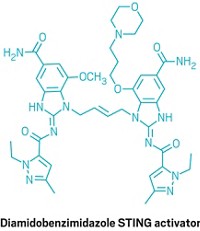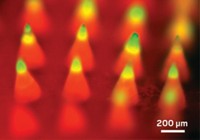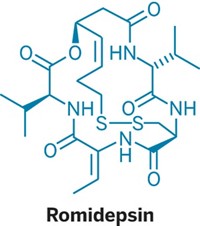Advertisement
Grab your lab coat. Let's get started
Welcome!
Welcome!
Create an account below to get 6 C&EN articles per month, receive newsletters and more - all free.
It seems this is your first time logging in online. Please enter the following information to continue.
As an ACS member you automatically get access to this site. All we need is few more details to create your reading experience.
Not you? Sign in with a different account.
Not you? Sign in with a different account.
ERROR 1
ERROR 1
ERROR 2
ERROR 2
ERROR 2
ERROR 2
ERROR 2
Password and Confirm password must match.
If you have an ACS member number, please enter it here so we can link this account to your membership. (optional)
ERROR 2
ACS values your privacy. By submitting your information, you are gaining access to C&EN and subscribing to our weekly newsletter. We use the information you provide to make your reading experience better, and we will never sell your data to third party members.
Pharmaceuticals
Fighting HIV With Multivalent Gold Nanoparticles
May 19, 2008
| A version of this story appeared in
Volume 86, Issue 20
A therapeutically inactive small molecule has been transformed into a potent drug for fighting HIV simply by conjugating the compound to a gold nanoparticle (J. Am. Chem. Soc., DOI: 10.1021/ja710321g). A team led by Daniel L. Feldheim of the University of Colorado, Boulder; David M. Margolis of the University of North Carolina, Chapel Hill; and Christian Melander of North Carolina State University developed the strategy in which several copies of a compound that binds only weakly to a target are attached to a nanoparticle to create a multivalent agent that binds strongly. These nanoparticle-small-molecule conjugates, which are the size of proteins, provide multiple contact points for a biological receptor, thereby creating a strong interaction. The receptor in this case is CCR5, which HIV hijacks to gain entry to a cell. The researchers took SDC-1721, a compound that binds only weakly to CCR5, and attached 12 copies of the molecule to a 2-nm gold particle. On their own neither SDC-1721 nor the gold nanoparticles are able to keep HIV from infecting cells, but the SDC-1721-nanoparticle conjugate inhibits HIV replication at a concentration of just 10 nM.






Join the conversation
Contact the reporter
Submit a Letter to the Editor for publication
Engage with us on Twitter